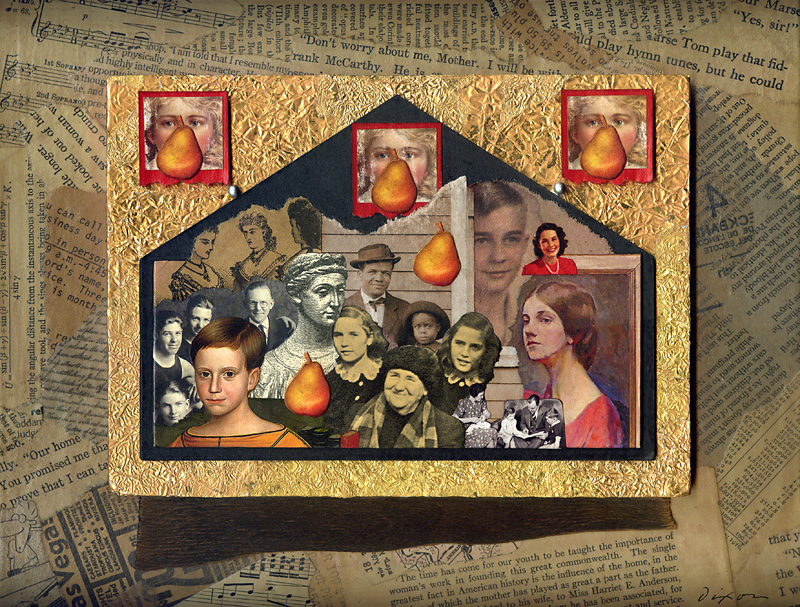“When people think about creativity, they think about artistic work — unbridled, unguided effort that leads to beautiful effect. But if you look deeper, you’ll find that some of the most inspiring art forms, such as haikus, sonatas, and religious paintings, are fraught with constraints. They are beautiful because creativity triumphed over the ‘rules.’ Constraints shape and focus problems and provide clear challenges to overcome. Creativity thrives best when constrained.”
— Marissa Ann Mayer
I have been intrigued by the recent work of participants in the Matchbook Collage Collaboration Project. Collage artists, whether working alone or in collaboration, are increasingly known for imposed restrictions — time, scale, format, or ingredients. Early on I gained a healthy respect for the power of parameters, most likely because I was educated as a designer and trained as an applied artist. Years later, this respect was amplified significantly when I witnessed my nephew create thousands of 101-word stories as an exercise in creative writing.
A big part of managing open-ended potential when initiating new work is to dig for an “inner assignment” that limits the options and sparks a creative impulse. Another good catalyst is to look around for an external constraint. I enjoy reacting to calls-to-artists that focus on an organizing concept. Even if I don’t actually apply, the triggered intuitive process can be informative. Here is a piece that I just finished in response to the exhibition theme of “Home.” In addition to framing the possibilities, it provided an opportunity for me to work more three-dimensionally, explore color scheme limitations, and further investigate the combining of found materials.
Pearental Discretion
mixed-media artifact by J A Dixon
11.25 x 9.25 inches
available for purchase
